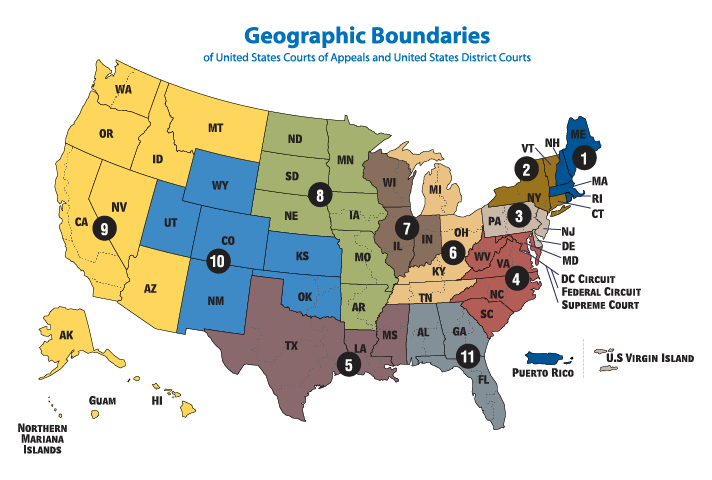American Courts and the Concept of Original Jurisdiction
 “American Courts and the Concept of Original Jurisdiction”
“American Courts and the Concept of Original Jurisdiction”
Dr. Michelle Beshears
As a criminal justice undergraduate, one of the most challenging items for me to fully grasp was understanding the American court system. This is mostly because it was always confusing to me with all the different levels of courts. My confusion was compounded by the United States having what is known as a dual court system. Often referred to as a dual hierarchal court system. This refers to the fact that the United States has both federal and individual state court systems. In most states, the court system includes trial courts, intermediate courts of appeals, and a court of last resort. The federal court system is divided into 13 Courts of Appeals (also called federal circuit courts), which hear cases appealed from federal district courts. Then there is the U.S. Supreme Court (as the court of last resort). Are you a bit confused yet? If so, let me try my best to explain.
Each level within the federal and state court system hierarchy has a set of responsibilities. The chart below shows that trial courts are at the bottom of the hierarchy. Trial courts typically have what is known as original jurisdiction (this means they are given authority to hear the case first). Next is the court of appeals. Appeals courts have what is known as appellate jurisdiction (this means they have the authority to review and overrule rulings made in a lower court).
Perhaps this chart will help illustrate this.

The U.S. judiciary features a dual court system comprising a federal court system and the courts in every state. On both the federal and state sides, the U.S. Supreme Court is at the top and is the final court of appeal.
You may be asking, so what cases are heard at what court? The answer goes back to each court’s jurisdiction or authority to enforce laws. In other words, state courts can hear cases under their state’s laws. While federal courts are typically limited to cases involving federal law or the United States Constitution. In federal and state systems, jurisdiction is usually limited by three issues, i.e., level in the court hierarchy, geographic reach, and case type.
Let’s briefly touch on the issue of geographic reach. Other than the United States Supreme Court, courts only hear cases within certain predetermined geographic boundaries. For example, the geographic jurisdiction of a state trial court is generally limited to the city or county where the court is located and operates.
The chart below reflects the U.S. Courts of Appeals’ and U.S. District’s geographic boundaries.

Source: http://www.uscourts.gov/about-federal-courts/federal-courts-public/court-website-links
Please take a look at this video. It explains the federal side of the dual court system hierarchy well.
Now is about the time students usually ask,
“Why do we have two legal systems in the United States?”.
Excellent question! It has to do with federalism.
Please take a look at this brief video to learn the basics of federalism.
In closing, I hope your understanding of the American dual court system is now better than mine was as an undergraduate.

Dr. Beshears has earned two baccalaureate degrees, one in social psychology and another in criminal justice. She also has two graduate degrees, one in human resource development and another in criminology, from Indiana State University. She has also earned her Ph.D. in Business Administration with a specialization in Criminal Justice from Northcentral University. Dr. Beshears served in the U.S. Army for 11 years. She obtained the rank of Staff Sergeant before attending Officer Candidate School at Fort Benning, Georgia, where she earned her commission. As a commissioned officer. Dr. Beshears has led numerous criminal investigations and worked with several external agencies. As a civilian, she has worked with the local sheriff’s department, state drug task force, and FBI. Dr. Beshears resides with her husband, Dr. Michael Beshears, their son Hunter, and daughter Malia near Norfork and Bull Shoals Lakes in Clarkridge, Arkansas. She has three beautiful grown stepdaughters, Michele, Cora, and Mollye.
Peer-reviewed Publications include:
Beshears, M. L., Beshears, M. L., Weiss, D., & Crocker, C. D. (2017). Sex Offender Community Notification Law Reform: A Call for More Active, Consistent, and Detailed Information about High-Risk Offenders. International Journal of Social Science Studies, 5(5), 71-78.
Beshears, M. (2016). Neighbors of registered sex offenders: A qualitative analysis of their lived experiences. International Journal of Law, Crime, and Justice, 48, 40-49.
Beshears, M. (2015). Evaluating Lived Experiences of Those Living Next to or Near Sex Offenders (pp. 116). ProQuest Dissertation Publishing.
Presentations Include:
Presented at the 2018 Convention of the Academy of Criminal Justice Sciences on February 17, 2018, in New Orleans, Louisiana, titled, Social Media Use: A Tool for Solving Crimes and Building Community Relations. Co-presenters were criminal justice professors Dr. Michael Beshears and Dr. Mark Bond.
Presented at the 2017 Academy of Criminal Justice Sciences Convention on March 24, 2017, in Kansas City, Missouri, titled Sex Offender Community Notification Law Reform: A Call for More Active, Consistent, and Detailed Information About High-Risk Offenders.
Presented at Oxford University, London (video conference). Topic – Black Lives Matter: Social Justice 2.0 September 26, 2017. The lecture was live-streamed to graduate students in the sociology program and their professors. Co-presenters were criminal justice professors Dr. Michael Beshears, Dr. Mark Bond, and Nicole Cain (Ph.D. c).
Beshears, M.L., & Beshears, M.L., (May 7, 2014). Sloan C Discussion. “Briefing of 7th Annual Emerging Technologies for Online Learning International Symposium,” APUS, Adobe Connect – Phone and Online.

subscribe for free